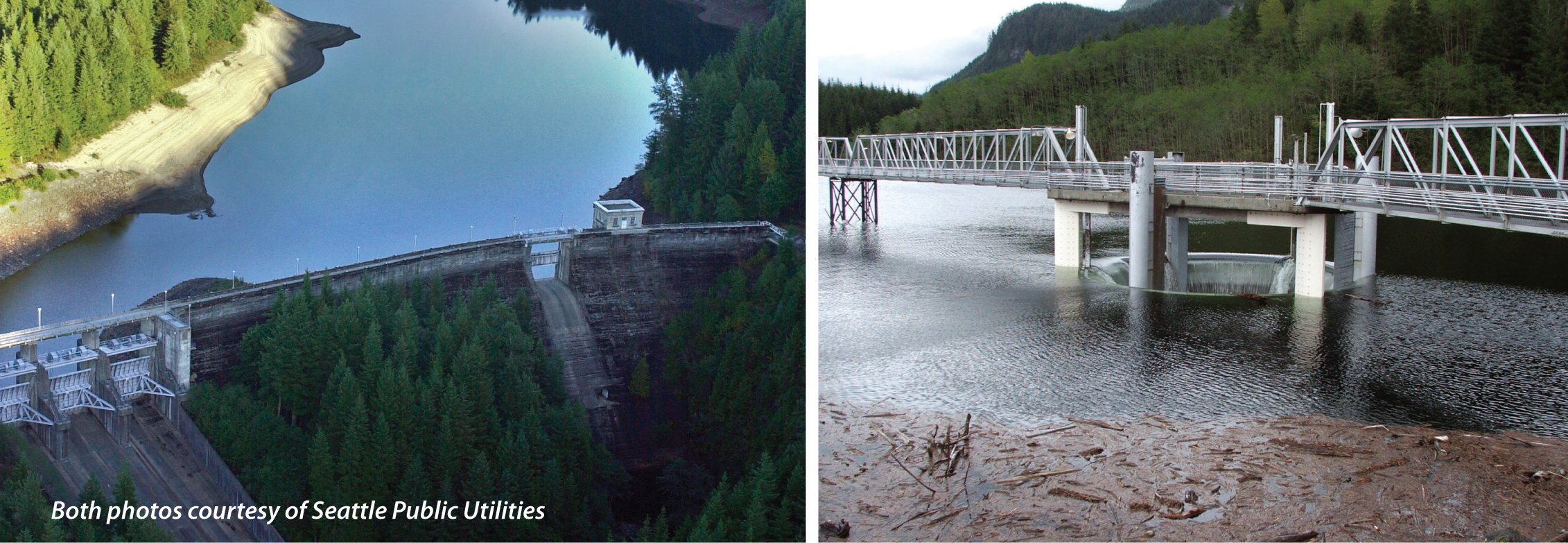This question will have an official answer on April 1, 2015 when a coalition of public agencies gets together for a comprehensive review… however current indicators look optimistic for sufficient water.
For a number of months now, staff from the Seattle Public Utilities (SPU) and a number of other agencies have been closely tracking and monitoring the leading indicators of water supply—including snow and precipitation levels, as well as the water levels in both of our area’s two main water reservoirs: the Masonry Pool Reservoir and the South Fork Tolt Reservoir.
Snowpack and precipitation are measured on a water year (October through September) as identified by the US Geological Survey. Although our snowfall was limited in the mountains this winter, rainfall events along with proactive management by SPU staff are all looking favorable towards meeting our region’s water needs this summer without any restrictions, as explained in this detailed blog post by Cliff Mass.
Delicate Balancing Act
Predicting the water supply can be as difficult as predicting the weather. However managing the water supply is also a delicate balancing act. In an average precipitation year, our area’s two main watershed reservoirs have just enough water stored for one water cycle year. Why?
If not enough water is released in the winter, there could be flooding. If too much is released, there won’t be enough stored for the dry summer months. Drought conditions in the spring could prevent the reservoir from filling adequately.
Interconnected Decision-Making
Water supply in our region is all interconnected. Salmon, lakes, locks, and people all share the same limited amount of water gathered and stored in the Cedar River watershed. Managing water levels helps ensure adequate supply for fisheries, public recreation, water levels in Lake Washington, and the operation of Ballard Locks, not to mention safe passage for fish, navigation, salinity control, and adequate summer residential water use.
Optimistic Data Thus Far
Every week, SPU updates the water supply conditions on their website, comparing current information with historical averages. This year, precipitation in both watersheds is about the same as the 60 year average. In fact, SPU staff began filling the reservoirs earlier this year, so as of today, there is more water available this year than compared to the long term average.
Yes, we have far less than the 30 inches of historical snowpack (and less than 10 inches of snow in the watersheds) this year. However, when we compare the current year’s water use for our region against where we were 20 years ago, water usage rates are down considerably even though the population in our region has grown.
SPU will continue to monitor the lake levels closely, especially if we are to have a significant rainfall event or two like we traditionally have each spring. Too much rain too fast can have a rapid impact on the reservoir and cause flooding of the Cedar River through Renton. SPU staff will continue to closely coordinate with all of the involved agencies to make sure there is an appropriate amount of water being stored and managed all throughout the year.
For more information and to view the current status of our water supply, visit the Seattle Public Utilities’ “Supply Outlook” page>

